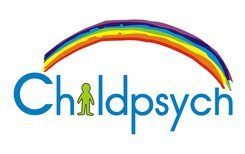If you suspect that your child might be suffering from Sensory Processing Disorder, it would be beneficial to have him assessed by an Educational Psychologist, Occupational Therapist or Peadiatrician. The sooner Sensory Processing Disorder is diagnosed, the sooner therapy can start and the better the chances of improvement.
Treatment for Sensory Processing Disorder is mainly done by an Sensory Integration trained Occupational Therapist, but listening therapy, speech therapy or physiotherapy may also be included. Treatment depends on each child’s individual needs but basically focuses on helping them adapt to sensations by gradually exposing them to these sensations while simultaneously trying to adapt their environments as far as possible to be able to provide an optimum level of stimulation. Treatment is usually presented in a fun and playful way so that the child does not feel threatened by the stimulus.
The work done during your child’s Occupational Therapy sessions will be most effective when reinforced at school and at home. It is likely that children with Sensory Processsing Disorder will always have some level of difficulty, but with therapy they can learn to cope with everyday situations.
Dr Lucy Jane Miller and Doris A Fuller in the book Sensational Kids suggests that therapists continually evaluate each child’s ability in the following areas that form the acronym: A SECRET
A – Attention: Is there a way to enhance the child’s attention?
S – Sensation: Is there a way to modify the child’s responses to sensory stimuli?
E – Emotion: What emotion is the child feeling and is there a way to regulate the emotion?
C – Culture: What part of the family’s culture (routines and habits) can be changed to avoid difficult sensory situations for the child?
R – Relationship: Is there something in the relationship that affects the child? Does he dislike hugs for example?
E – Environment: What is the environment can be changed to make it more optimal for the child?
T – Task: What is challenging about the task the child is difficult with and how can it be adapted to make it easier for the child?

